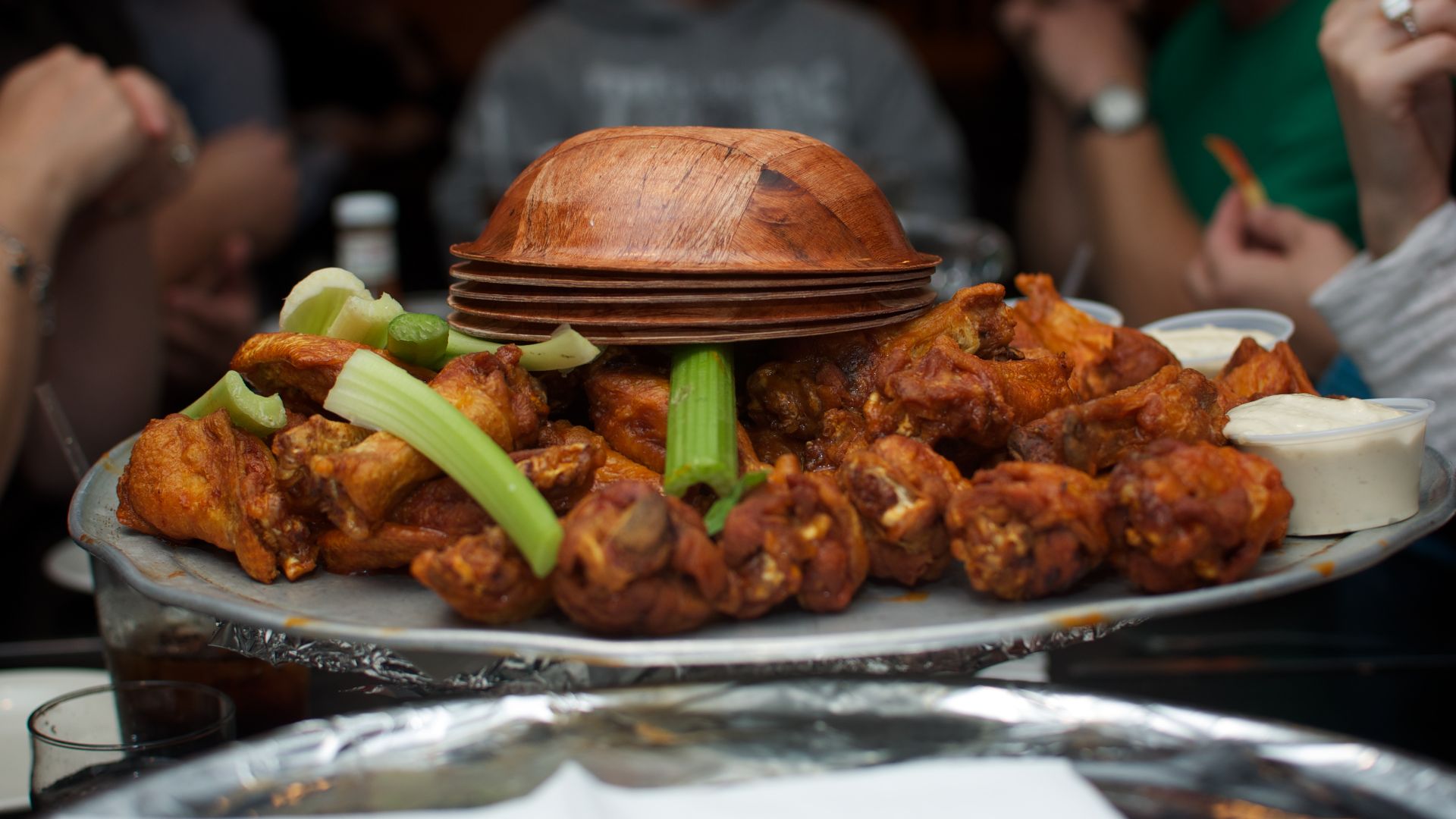If there’s one food that represents pure American sports-bar culture, it’s the buffalo chicken wing. Crispy skin, tangy hot sauce, and blue cheese dressing turned a haphazard last minute meal into one of the country’s favorite game-day staples.
But behind every basket of wings lies a long-running argument: who actually invented the iconic dish? Join us as we uncover he truth.
The Origin Debate Begins
Most people assume there’s a single, clean answer, but the truth is surprisingly complicated and built on conflicting memories, interviews, and family accounts. Everyone agrees that Buffalo, New York, is the birthplace—but not everyone agrees on the person responsible.
The most widely accepted origin story comes from Anchor Bar, a family-run Italian-American restaurant. According to the story, co-owner Teressa Bellissimo invented the buffalo wing in 1964. Late one night, her son Dominic and his friends arrived hungry, and Teressa supposedly improvised by frying leftover wings and tossing them in a vinegar-based hot sauce.
The group loved them, and the buffalo wing was born. Over time, this event became the official narrative, told repeatedly in articles, interviews, and documentaries, eventually becoming the version most Americans learned. But even within the Bellissimo family, details vary depending on who tells the story, leaving space for interpretation.
Competing Claims And Confusion
While Anchor Bar’s story became the most famous, it wasn’t the only one. A rival claim emerged from John Young, a Buffalo-born chef who operated a restaurant called Wings ’N Things. Young was serving fried chicken wings with his signature tomato-based “mambo sauce” as early as 1961—three years before the Bellissimo story.
Unlike Anchor Bar’s split wings, Young served his whole wings and marketed the item proudly. He argued that he was the first person to treat chicken wings as a standalone restaurant specialty, rather than scraps to be discarded or used for stock. Young’s contribution was largely overshadowed for decades, partly because Anchor Bar’s version spread nationally.
But as food historians dug deeper into regional culinary history, Young’s story gained new attention. In 2013, he was posthumously inducted into the National Buffalo Wing Festival Hall of Flame, prompting wider recognition that the evolution of the wing might have involved more than just one family. Suddenly, the timeline began to look less linear and more like the shared development of an idea.
How History Remembers The Wing
So who truly deserves credit? It depends on how you define invention. If invention means creating the flavor profile that became mainstream, Teressa Bellissimo and Anchor Bar clearly led the way. If it means commercializing wings and turning them into a restaurant signature, then John Young has a strong claim.
Many historians now argue that both figures shaped the dish in different ways that reflect Buffalo’s diverse food culture. Today, most researchers also accept a blended conclusion: buffalo wings didn’t come from one dramatic flash of inspiration but from several innovators who turned a cheap poultry cut into something memorable.
KEEP ON READING

The Most Popular Signature Dishes Around the World








